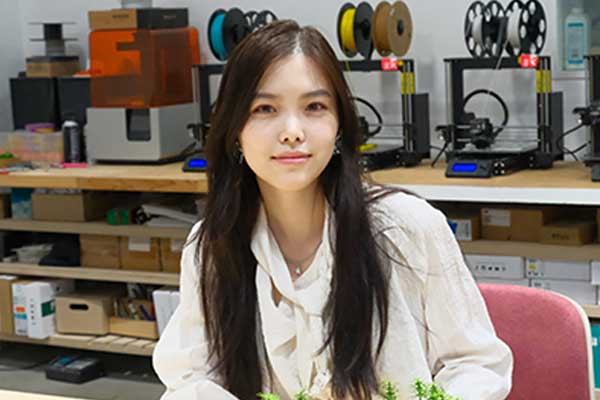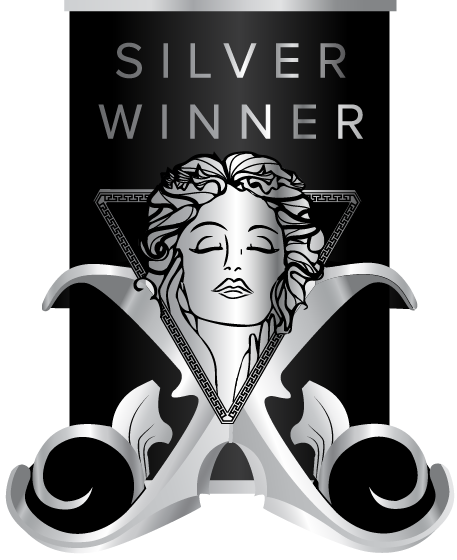
Interview
Yuan Tian
1 Congratulations on winning the MUSE Design Awards! Can you introduce yourself and share about what inspired you to pursue design as a career?
Thank you! I’m a landscape designer based in Los Angeles. My journey into design was inspired by a deep appreciation for nature and the built environment. From a young age, I was fascinated by how spaces can shape our experiences and emotions. This led me to pursue landscape design, where I could merge creativity with functionality, transforming outdoor spaces into meaningful places for people to connect with nature.
2 What does being recognized in the MUSE Design Awards mean to you?
The MUSE Design Awards represent an important opportunity and a milestone for me. They allow me to reflect on my past work and design philosophy, gaining a deeper understanding of my creative journey. Additionally, being recognized alongside other outstanding participants is both inspiring and confidence-boosting, reinforcing my passion for design.
3 How has this achievement impacted your career, team, or agency, and what opportunities has it brought so far?
Winning the MUSE Design Awards has given me the opportunity to see the works of other participants in the same category, allowing me to reflect on the diverse ways people perceive and interpret the world. Exploring the winning projects has been both a valuable learning experience and a form of creative exchange. It also serves as a great networking opportunity, connecting me with other talented designers. Most importantly, I deeply cherish my work, and I’m truly grateful that it has been recognized.
4 What role does experimentation play in your creative process? Can you share an example?
Experimentation has been a constant throughout my career as a landscape designer. It shapes how I approach research, generate form, and represent landscapes—moving beyond conventional solutions to explore alternative systems and possibilities. For me, it’s not just a design method, but a way to challenge assumptions and rethink the relationship between ecology, space, and society. For example, in my award-winning project Back on Rail, I chose brownfield remediation as my focus. During the site research phase, I collected samples of plants, soil, and water. After discovering issues with the soil, I conducted a second round of sampling and testing, which revealed hidden opportunities within the site. Through literature review and discussions with experts, I developed a systematic understanding of soil contamination treatment methods. Then, I began to explore the relationship between these remediation processes and spatial design.
5 What's the most unusual source of inspiration you've ever drawn from for a project?
One of the most unusual sources of inspiration in my work comes from personal experiences like dreams and memories. These subconscious moments often carry rich emotions and abstract narratives that I translate into spatial design. In one project, a recurring childhood dream of shifting landscapes inspired a design that explored movement and memory through layering, translucency, and dynamic perspectives. I believe these intuitive sources add emotional depth and a sense of the surreal, creating spaces that resonate beyond function.
6 What’s one thing you wish more people understood about the design process?
I wish more people understood that the design process is not just about solving problems—it’s about staying curious, thinking like a child, and acting like an expert. Great design comes from an openness to exploration, questioning conventions, and embracing uncertainty. The best ideas often emerge when we allow ourselves to play, to wonder, and to see the world with fresh eyes. However, turning these ideas into reality requires precision, deep knowledge, and technical expertise. It’s this balance between curiosity and expertise that makes design both exciting and impactful.
7 How do you navigate the balance between meeting client expectations and staying true to your ideas?
I navigate the balance between meeting client expectations and staying true to my ideas by finding creative ways to make the design both meaningful and engaging—while staying within budget constraints.
8 What were the challenges you faced while working on your award-winning design, and how did you overcome them?
One challenge I faced in my award-winning design was struggling to articulate my concept at the beginning. I felt unprepared, and it was hard to define the direction. Over time, through exploration and iteration, I gained clarity and confidence. I learned that the design process isn’t about having everything figured out from the start but about trusting the process and letting ideas evolve as you go.
9 How do you recharge your creativity when you hit a creative block?
When I hit a creative block, I recharge my creativity in two main ways: through art and nature. In terms of art, I often turn to books and films to immerse myself in different perspectives and narratives. This helps me break out of my own thought patterns and sparks new ideas. Nature, on the other hand, offers a more immediate form of inspiration. I love visiting botanical gardens, where I can observe plants, animals, and natural phenomena. These moments of quiet observation often lead to unexpected insights and renewed energy.
10 What personal values or experiences do you infuse into your designs?
I believe that design should never emerge from nothing, but it must still be unexpected and innovative. My personal values emphasize a deep understanding of existing systems, while seeking to evolve them in meaningful ways. In my work, I strive to infuse this belief that design should build on what already exists—whether it’s nature, culture, or societal structures—but also push the boundaries of what’s possible within those frameworks. This balance between respect for the past and a willingness to break new ground is central to my approach to design.
11 What is an advice that you would you give to aspiring designers aiming for success?
My advice to aspiring designers is to maintain curiosity and confidence.
12 If you could collaborate with any designer, past or present, who would it be and why?
If I could collaborate with any designer, I would choose someone in stage design. I’m inspired by how theater integrates storytelling into space and the dynamic relationship between the audience and the stage. It’s a field where I’d love to push my creative boundaries and bring a more narrative-driven approach to my work.
13 What's one question you wish people would ask you about your work, and what's your answer?
I choose not to speculate about what people might ask. I prefer to let the work speak for itself and engage with questions that naturally arise from it. Sometimes, the most interesting insights come from spontaneous curiosity rather than from pre-determined expectations.

